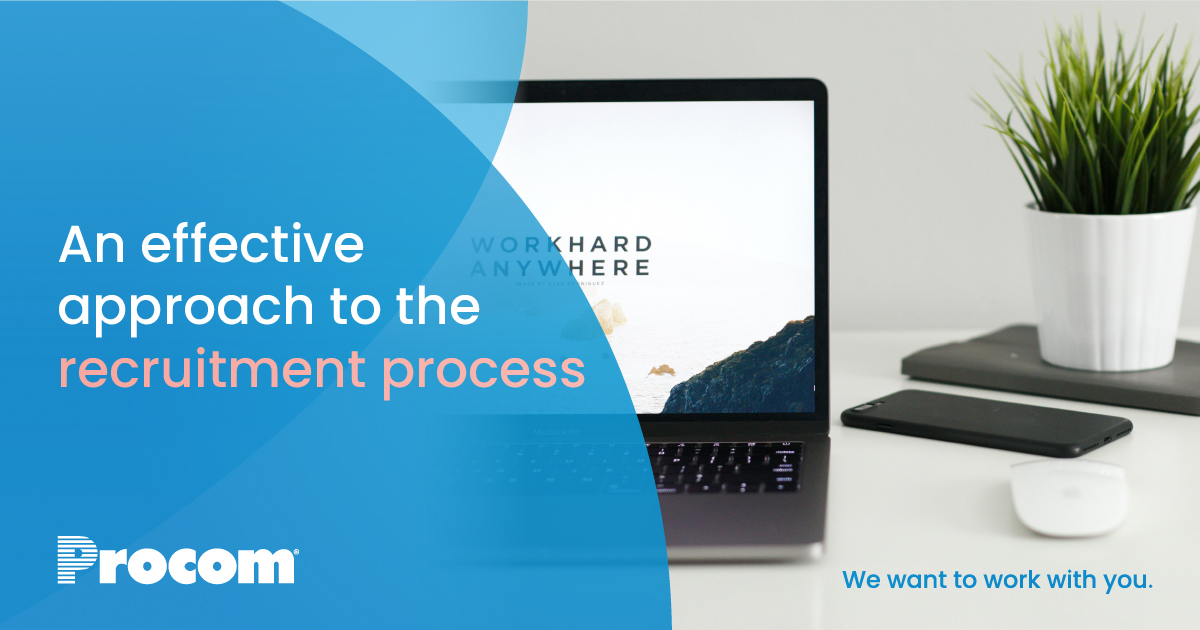Recruitment leaders recognize the recruitment process as a series of strategic and critical steps hiring teams must take in order to achieve overall business and workforce goals.
For most organizations and job seekers, the recruitment process can be incredibly time-consuming. The average time to hire for employers and candidates before the coronavirus decimated industries and drove others into full-throttle was between 24 – 90 days.
As organizations continue to keep up with changes in the workforce and fluctuating demands in services, employers looking to engage top candidates for a job now must adjust their recruitment process and strategies in order to bring top candidates more quickly and effectively into their workforce(s) – and while direct sourcing is a popular option, many leaders are also adding Recruitment Process Outsourcing to their talent acquisition strategies.
Whether you’re interested in reshaping your current internal recruitment program or are interested in how a third party can help you find the right fit, the information below will help inform your decision.
A shorter process means a better candidate experience!
Many employers across North America who have effectively adjusted their recruitment efforts have shortened their time to hire for a job or project by a full work-week (five days). Not only does this save employers on the costs associated with a lengthy hiring process, it provides candidates with a better job search experience that can help keep employers from losing top candidates to another job or project.
Get ready! The recruiting process will be competitive!
The job market in the new world of work will be a competitive one, and any time employers decrease their time to hire during the recruitment process, hiring teams will engage better candidates.
If your organization is looking to adjust your recruitment process to effectively hire new employees or engage contingent workers, the information provided on the recruitment process below will provide insights on current best practices.
How do you know when it’s time to start the recruitment process?
There are a few critical steps involved in the recruitment process before the selection process can begin sourcing candidates.
Does the recruiting process begin when a new need to fill a job is identified? Is it when tasks need to be completed but there is no one within the organization’s team to complete them? Or is it when a hiring team realizes that an existing job has morphed into a completely different need than when it was first identified?
The answer is that the recruitment process can begin at any one of these stages, but first – employers must know what they’re looking for before going to market to fill a job.
Are all recruitment processes the same?
The definition of recruitment may be the same regardless of the organization sourcing candidates, but the way recruitment is practiced will differ depending on the organization and their hiring needs when looking to fill a job.
This means the recruitment process is organization-specific for the purpose of finding and hiring new employees or engaging contingent workers for a job or project.
Who is involved in the hiring process?
Typically, the Human Resources function within an organization will take ownership of the recruitment process to find a traditional new employee, although Procurement is often involved in engaging contingent workers. Organizations also will partner with third party vendors like staffing firms – depending in their recruitment needs.
When looking to find qualified candidates, recruitment ownership can vary depending on the specific organizational structure of the company carrying out the recruitment process.
Learn more about who is involved in the recruitment process here.
What are the steps involved in the recruitment process?
Before advertising the opportunity to job seekers, hiring teams must craft a detailed job description – this is critical to the process. This job description will then be used to create a compelling job posting that will engage the most qualified candidates and initiate an interview. Before a job offer can be made to any candidate, however, below are the steps involved in the process of recruiting.
Intake Session
The first step in sourcing candidates for a job or project involves an internal intake meeting to review the job description, dissect the job description, drill down on the must haves and ensure key stakeholders involved in the process are on the same page.
If an organization is working with an external recruitment agency to fill a job project role, this is also the stage in the process where job market expertise is shared. The intake session is where key stakeholders will provide job market expertise into availability of candidates, competitive intelligence, as well as rates and salary expectations.
Once all key stakeholders involved in the process are on board, and depending on the organization’s recruitment needs, the steps below can be taken in order to source and engage candidates for a job or project:
Direct Sourcing
An internal hiring team can also access candidates for a job or project using a Direct Sourcing program. This recruitment strategy will use an internal database for searching and applicant generation and building a pipeline of potential candidates. The recruitment team will also use job boards like LinkedIn for sourcing candidates for a job or project.
Screening Candidates
Screening candidates during the hiring process will first begin with the initial phone interview. This initial phone interview will be used to gauge a candidate’s suitability for the job or project. If candidates are qualified, they will then move to the second interview.
This stage of the process will be used to map candidates’ skills against job requirements, assess soft skills of candidates and alleviate red flags relating to concerns, such as the commute, salary/ rate or job expectations. Interviewers should also aim to understand motivating factors for candidates during this stage of the interview process.
It’s important to note that since the pandemic, face-to-face job interviews are now nearly 100 per cent conducted through remote or video job interviews until the crisis is over.
Negotiations
Negotiating the job offer with the successful candidate will entail discussing the details of the offer with him or her to obtain initial thoughts and address any concerns with the agreed upon salary or rate.
Pre-closing
Once the interview stage of the process has been completed and a candidate has been chosen for the job or project, it’s important to reaffirm the candidate’s commitment to the job in terms of salary/rate, location and other contract terms.
References
During the interview process, this stage of the process will confirm the candidate’s employment and gain insight into the opinions of former managers.
When contacting references during this stage of the recruitment process, it’s important for hiring teams to have knowledge of the different types of reference calls and how to best prepare for them.
Criminal Background checks
Before a new worker can be onboarded and begin his or her job once the selection process has been successful, Criminal Background checks will be initiated to ensure the successful candidate is providing proper I.D and clears all background requirements.
Typically, a background check during the recruitment process will include a criminal-history check based on information supplied by candidates. These checks will reveal felony and misdemeanor criminal convictions, any pending criminal cases and any history of incarceration as an adult. If any red flags are raised during this stage of the hiring process, candidates may or not be excluded from moving forward to the next stage of recruitment.
Some organizations also conduct employment checks and education, but for the most part, criminal checks are the most common.
Onboarding
A successful recruitment process lifecycle will end with the onboarding. Effective onboarding will ensure the new employee or contingent worker is successfully brought into the organization.
Effective onboarding of a new employee or contingent worker includes not only signing paperwork, but also meeting co-workers and direct managers, ensuring all technologies and hardware needed to perform the job are in place, becoming familiar with company policies and other onboarding tasks.
Remote onboarding during the recruitment process is now a part of the new work world, and getting it done right when recruiting talent into your organization is a must. It’s critical to make sure that when hiring remote employees or engaging contingent workers, that you make sure you provide a structured onboarding experience. Use an onboarding checklist to get new hires up to speed on their job, technologies, your business and key policies.
What are the effects of a bad hire due to a poor recruitment process?
Recruiting, hiring and training new employees or contingent workers is arguably one of the most critical aspects to an organization’s success, and the cost of onboarding the wrong fit during the recruitment process is an expensive one — about 30 per cent of an employee’s first year salary. Hiring the wrong employee for a job or a contingent worker for a project can also lead to:
- Decrease in job productivity
- Cultural imbalance in the workplace
- Reputational damages
- Skills gaps
The role of a staffing agency
An experience recruiting firm will provide flexibility, service differentiation and expert guidance to help its client organization navigate through the current and unchartered business environment.
When recruiting remotely, it can prove overwhelming amid the distractions that come from working from home. An experienced agency that understands your talent needs will source, screen and onboard resources for you.
As the agency is responsible for the recruiting component of the process, the administrative time and costs associated with the process are removed from your budget – saving time and money. The enhanced exposure of your opportunity through the staffing agency’s resources can increase the odds that the talent you’re seeking finds your role.
Staffing agencies are also aware of what talent has recently entered the market and can source that resource quickly and effectively on both a full-time or a contingent basis.
The Voice of Talent: Return to the Office Report
Procom recently surveyed over 1,000 knowledge workers to discover how and where they prefer to work as offices re-open across North America.
The Voice of Talent Report offers actionable insights into what workers expect in relation to mandatory vaccinations, remote work preferences, The Great Resignation, COVID-19 safety measures and more.
Access your complimentary copy to discover how to attract talent in a post pandemic world:






